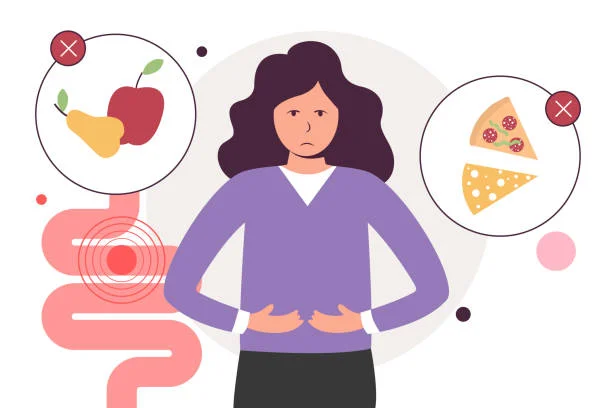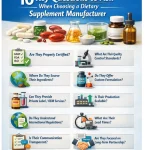Bloating is one of those frustrating symptoms that can turn an otherwise normal day into an uncomfortable ordeal. Your stomach distends, your clothes feel tight, and you’re left wondering what you ate that triggered such an extreme reaction. For many people, the answer lies in FODMAPs—a group of carbohydrates that can wreak havoc on sensitive digestive systems.
But why do these particular foods cause such pronounced bloating and digestive distress? The answer involves a fascinating interplay of digestive chemistry, gut bacteria, and individual physiology. Understanding this process can help you make sense of your symptoms and make more informed decisions about managing them.
Discover insights that matter—check out related posts to elevate your knowledge.
What FODMAPs Actually Are
FODMAP is an acronym for Fermentable Oligosaccharides, Disaccharides, Monosaccharides, and Polyols. These are specific types of short-chain carbohydrates that share two critical characteristics: they’re poorly absorbed in the small intestine, and they’re readily fermented by gut bacteria.
The five categories include fructans (found in wheat, onions, and garlic), galacto-oligosaccharides or GOS (in legumes and some nuts), lactose (in dairy products), excess fructose (in some fruits and honey), and polyols (sugar alcohols in certain fruits and artificial sweeteners). While these are chemically distinct, they all follow a similar path through your digestive system—and for sensitive individuals, that path leads to significant discomfort.
The Malabsorption Problem
The first issue with FODMAPs happens in the small intestine, where most nutrient absorption occurs. In a perfectly functioning digestive system, carbohydrates get broken down into simple sugars that are then absorbed through the intestinal wall and into the bloodstream.
But FODMAPs resist this process. Some people lack sufficient enzymes to break them down (like lactase for lactose), while others have transport mechanisms that can’t efficiently move these molecules across the intestinal wall. Fructose, for instance, relies on specific transporters that have limited capacity—consume more fructose than these transporters can handle, and the excess continues down the digestive tract unabsorbed.
This malabsorption has immediate consequences. Unabsorbed carbohydrates are osmotically active, meaning they draw water into the intestinal lumen. This increased fluid volume can trigger intestinal cramping and, for some people, loose stools or diarrhea. If you’ve ever noticed watery diarrhea after consuming high-FODMAP foods, this osmotic effect is likely the culprit.
The osmotic load also explains part of the bloating equation. The influx of water distends the intestines, creating that sensation of fullness and abdominal expansion. But the water is just the beginning—the real bloating comes from what happens next.
Bacterial Fermentation: The Gas Factory
When unabsorbed FODMAPs reach the large intestine (colon), they encounter trillions of bacteria that are more than happy to feast on these carbohydrates. This is where fermentation occurs—a metabolic process where bacteria break down the FODMAPs and produce various byproducts, including gases.
The primary gases produced during FODMAP fermentation are hydrogen, methane, and carbon dioxide. Some people also produce hydrogen sulfide, which has that characteristic rotten egg smell. The volume of gas produced can be substantial—studies using hydrogen breath tests have shown that FODMAP-rich meals can generate several liters of gas in sensitive individuals.
This gas has to go somewhere. Some is absorbed through the intestinal wall and exhaled through the lungs. Some passes through as flatulence. But much of it gets temporarily trapped in the colon, causing that characteristic bloated, distended feeling. The sensation can range from mild fullness to looking several months pregnant, depending on the amount of gas produced and how well your digestive system can move it along.
Resources like FODZYME’s guide to bloating explain this fermentation process in detail, helping people understand that the bloating isn’t just about food volume—it’s about how specific carbohydrates interact with gut bacteria to create excess gas. This knowledge can be empowering because it shifts the focus from random food reactions to understanding the specific biochemical process at play.
Why Some People React More Than Others
Not everyone experiences bloating from high-FODMAP foods, which raises an important question: what makes certain people more susceptible?
Gut bacteria composition plays a significant role. People with higher populations of gas-producing bacteria will naturally generate more hydrogen and methane when fermenting FODMAPs. The specific bacterial species present also matters—some produce more gas per unit of carbohydrate than others.
Visceral hypersensitivity affects how you perceive the gas that’s produced. Some people have heightened nerve sensitivity in their gut, making normal amounts of gas feel extremely uncomfortable. This is common in people with irritable bowel syndrome (IBS), where the same physical distension that others might barely notice can trigger significant pain signals.
Motility issues determine how quickly gas moves through and exits your system. If you have slow gut transit, gas accumulates and creates more prolonged bloating. If transit is too fast, you might experience diarrhea alongside bloating as the osmotic effect of FODMAPs pulls water into the colon rapidly.
Small intestinal bacterial overgrowth (SIBO) can amplify FODMAP reactions because bacteria are fermenting carbohydrates earlier in the digestive tract—in the small intestine rather than the colon. This produces bloating that appears more quickly after eating and may be accompanied by additional symptoms like nausea or early satiety.
Enzyme deficiencies contribute to FODMAP intolerance when your body can’t break down specific carbohydrates. Without sufficient lactase, for example, lactose passes undigested to the colon where it’s fermented, causing the same bloating issues as other FODMAPs.
The Dose-Dependent Response
One crucial aspect of FODMAP-related bloating is that it’s typically dose-dependent. Unlike food allergies, where even trace amounts can trigger reactions, FODMAP sensitivity operates on a threshold model. Small amounts of high-FODMAP foods might be perfectly tolerable, while larger servings exceed your system’s capacity and trigger symptoms.
This threshold varies individually and can even fluctuate within the same person depending on factors like stress levels, sleep quality, hormonal status, and overall gut health. You might tolerate a clove of garlic one week and react strongly to the same amount the next week if other factors have lowered your threshold.
The dose-dependent nature also explains FODMAP “stacking”—when multiple low-to-moderate FODMAP foods consumed in the same meal add up to exceed your threshold, even though each individual food would be fine alone. This stacking effect is why symptom tracking needs to consider entire meals rather than isolated ingredients.
Beyond Simple Bloating: The Full Symptom Picture
While bloating is the most recognizable symptom of FODMAP intolerance, the fermentation process and osmotic effects create a cascade of additional issues.
Abdominal pain and cramping occur as the intestines stretch to accommodate excess gas and fluid. The pain can be sharp and localized or present as diffuse cramping that comes in waves as the intestines contract in an attempt to move contents along.
Changes in bowel habits are common, with some people experiencing diarrhea from the osmotic effect while others develop constipation if gas accumulation slows motility. Many people alternate between the two extremes, never quite achieving comfortable, regular bowel movements.
Excessive gas and flatulence are inevitable when bacterial fermentation produces liters of hydrogen and methane. While everyone passes gas (typically 10-20 times daily is normal), people reacting to FODMAPs may pass gas much more frequently and with greater volume and odor.
Fatigue and brain fog can accompany severe bloating, possibly due to the inflammatory response triggered by bacterial fermentation byproducts or simply from the physical discomfort interfering with sleep and normal activity.
Nausea and reflux may develop as bloating increases intra-abdominal pressure, which can push stomach contents upward and trigger heartburn or reflux symptoms.
Managing the Bloating Response
Understanding why high-FODMAP foods cause bloating is the first step toward managing symptoms effectively. The standard approach involves a temporary low-FODMAP elimination phase (typically 2-6 weeks) to allow symptoms to resolve, followed by systematic reintroduction to identify your personal triggers and thresholds.
But management isn’t just about elimination. Supporting healthy gut motility through regular physical activity, staying hydrated, managing stress, and eating in a relaxed state all influence how your body handles FODMAPs. Enzyme supplements that help break down specific FODMAPs before they reach bacterial populations can also reduce fermentation and subsequent bloating.
The goal isn’t permanent restriction but rather understanding your body’s specific responses well enough to make informed decisions about when certain foods are worth the potential discomfort and when they’re not.
The Bigger Picture
FODMAP-related bloating isn’t a character flaw or a sign of weakness—it’s a legitimate physiological response to carbohydrates your digestive system can’t efficiently process. The malabsorption, osmotic effects, and bacterial fermentation that cause your symptoms are real, measurable biochemical processes.
By understanding the mechanisms behind your bloating, you can move from feeling helpless and confused to having a clear framework for managing symptoms. You’re not broken; you’re simply working with a digestive system that processes certain carbohydrates differently. And with that knowledge comes the power to make choices that support your comfort and quality of life.
Spotlight on trends and tips—don’t miss our specially featured post of the week







